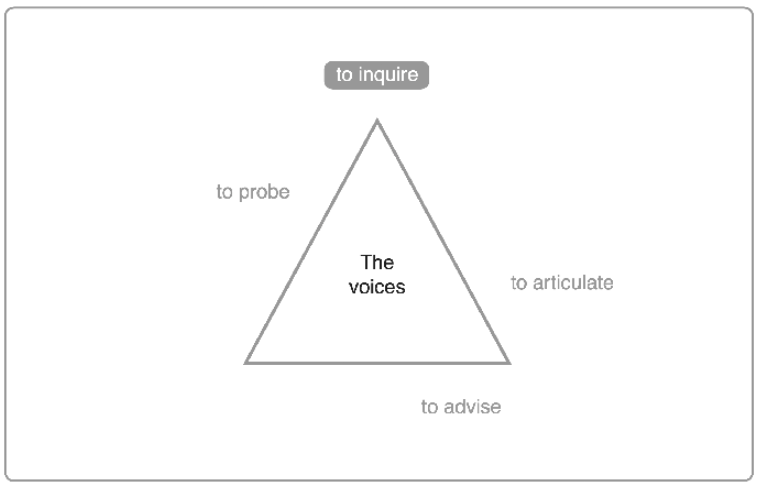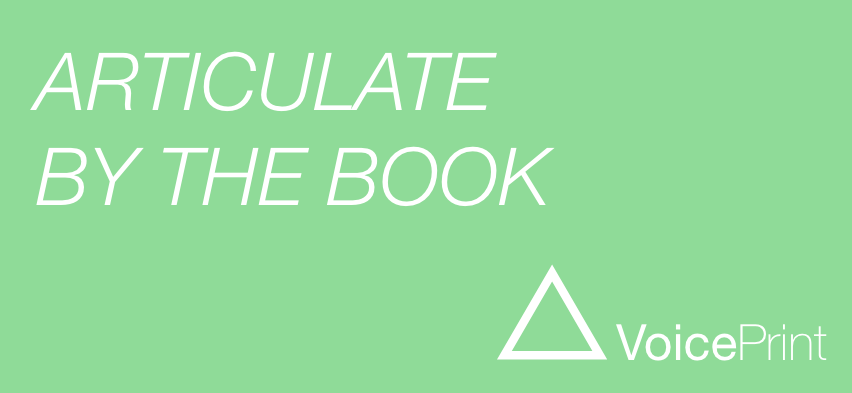
The Sound of Breaking Glass
There is clear evidence that women in general tend to be less forceful than men, when it comes to making their voices heard in the world of work. The effect is to disadvantage women, placing them in a ‘glass cage’ in their day-to-day interactions in the organisational context.
This is an absurdity in modern economies, where heavy manual labour is largely a thing of the past, where work revolves increasingly around the manipulation of knowledge, the provision of services and the nurturing of relationships, and where both educational and social opportunity have demonstrated that there is no sound reason to regard women and men as anything other than occupational peers.
The fact that men remain to a greater or lesser extent dominant in organisational hierarchies world-wide should not be taken as evidence that the current asymmetry is natural. The subordination of women is not a natural but a cultural state, and like any other culture, it can be changed.
So what can women do about the glass cage, its ceiling and its bars? This paper suggests four broad strategies and the cultural context in which each is likely to be most appropriate. The strategies are based on insights obtained from research and practice with our own VoicePrint diagnostic and developmental resources. The cultural contexts are described in terms of Hofstede’s well-known and highly researched framework of how cultures differ.
The emphasis is on practicality.
Strategy 1 – Rely on Role
People who find it hard to be assertive often find that difficulty can be alleviated, when they draw on their formal role or position to give them authority. Introverted types, for example, often make surprisingly effective chairpersons. Their preference for reflection allows them to avoid the trap of over-dominating or micro-managing the proceedings, enables them to observe the process and notice the finer points of what is going on, and then to summarise or suggest thoughtfully and carefully when discussions get stuck. They draw the energy to speak up and speak out, which is not the introvert’s preference, partly from the space which the chairing role gives them to watch, listen and reflect (activities which they enjoy) and partly from the fact that being ‘in the chair’ gives them a particular right to speak and to be heard.
The same broad principle can be extended from introverts to anyone who finds it difficult to ‘raise’ their voice sufficiently to make it heard. A formal role, as leader, business partner, consultant, expert advisor or whatever, will help a person to make herself heard, because it makes her a focus for
others’ attention. It sets up the expectation that they should listen. Of course this initial platform will quickly turn out to be collapsible, if the speaker doesn’t then proceed to show herself strong enough to fill the role.
Making your voice ‘strong enough’ is about far more than just volume. The ingredients that give a voice strength are connection, clarity and composure. Connection is its perceived relevance to the conversation. Clarity is partly about expression and audibility, but even more about purpose; the intent behind the voice needs to be clear, both to the speaker and to the listener. Composure is about what is said and how that is constructed, but also about the presence of mind needed to make any voice clear, connected and relevant. If someone’s voice lacks strength in these respects, listeners will not listen, because the speaker will not be meeting the implicit expectations which are the foundations for holding our attention.
The Rely-on-Role strategy therefore requires you to know which voices are expected of your role, which voices enable that role to make what are perceived to be the relevant sorts of contribution to the organisational conversation. For those in the broadest leadership roles, this is potentially the full repertoire of VoicePrint voices and we turn to that endeavour in Strategy 4. But many roles are narrower or more specialised than that. The role of Expert Advisor, for instance, would call for the use of at least Probe, Diagnose, Articulate and Advise. The role of Executive Coach would require the use of at least Inquire, Probe, Challenge and Articulate. A First Level Supervisor would need at least Inquire, Diagnose and Direct. A Non-Executive Director would usually be expected at least to Challenge, Probe, Evaluate and Advocate. The purpose here is not to provide an exhaustive catalogue of roles and their key voices, but to make the point that, with a little bit of careful and objective [5] thought, the particular VoicePrint voices that are most relevant for the role can easily be identified.
The next step is then to cultivate greater skill and sensitivity with the use of the role-relevant voices, building on those that are already present in your own VoicePrint and developing any which are currently gaps in your repertoire. Personal coaching from an accredited VoicePrint practitioner is the most direct way to do this.
If perceived relevance is important in securing people’s attention, then cultural context is part of what will help or hinder any strategy to make your voice heard. Strategy 1 is perhaps most likely to be helpful in what Hofstede calls ‘high power-distance’ cultures. These are cultures which expect more inequality, in which people are more accepting of organisational hierarchy. Roles, and particularly formal managerial and leadership roles, impart more power, because subordinates expect the incumbent to take the lead. This is an opportunity which women should use to counteract their general tendency to be less assertive than men in making their voices heard. As Elizabeth I of England is reputed to have said, ‘Half the secret of being a queen is to act like a queen.’ Hofstede’s ‘high uncertainty-avoidance’ cultures may also be receptive to Strategy 1, especially perhaps for those in managerial roles, because of their preference for structure and their expectation that managers will control rather than transform.
Strategy 2 – Blur the Difference
The essence of this strategy is to ‘be more like the boys.’ As women who had moved into managerial roles have said to me in the past, ‘You have to do what the men do, only more so, to show that you can do the job and be accepted as an equal.’ Like all strategies, this is not without risk. While Strategy 1 carries the risk of limiting yourself to a range of voices which is too narrowly focused on one particular role, Strategy 2 carries the risk that acting against prevailing expectations of what is ‘feminine’ can lead to a negative reputation for ferocity and a variety of offensive nicknames, among which ‘rottweiler’ or ‘attack dog’ are two of the mildest. This is further evidence of the way in which cultural inequality places women in a double bind. They’re damned if they don’t use their voices like men and they’re damned if they do.
So Strategy 2 needs to be approached with particular care. But this is where women in general have an advantage. The fact that they tend to be less assertive in putting their voices forward is an indicator that they are in general more sensitive than men to the potential impact of what they say and how they say it. The key to Strategy 2 then is to use the voices that men tend to use, but to do so with greater skill and sensitivity than men tend to do.
What are the voices that men tend to use most? VoicePrint research shows that they are the voices of deciding – Diagnose and Evaluate ( aka Critique) – and even more the voices of ‘decidedness’ – Advocate, Advise, Challenge and Direct (aka Admonish). If women are working in an environment where these voices constitute the prevailing ethos, then they cannot afford to under-use these voices. Under-use is tantamount to self-exclusion from the discussion. The alternative for women is consciously to employ these voices, and to do so with a unusual degree of know-how and know-when. Once again, personal coaching from an accredited VoicePrint practitioner, reviewing and rehearsing for the real interactions that make up the fabric of your work life, is the best way to do this.

Figure 1: The voices which men tend to use more strongly than women
In which of Hofstede’s cultures is Strategy 2 most likely to be effective? We would welcome an opportunity to do some empirical research directly into this question, but we would expect it to be in cultures which score around the middle rather than either very high or very low on his ‘masculinity index.’ Highly ‘masculine’ cultures, as Hofstede defines the concept, are ones in which people expect roles, behaviours and expressions of emotions to be highly differentiated between men and women. Men should behave like men: tough-minded, competitive and assertive. Women should behave like women: modest, caring and deferential. [6] In a highly gender-differentiated culture neither men nor women would find it easy to accept or adopt Strategy 2, Blur the Difference. Nor, however, is it likely to work well in cultures which already expect low gender differentiation, because these more ‘feminine’ cultures place greater value on the creation, development and maintenance of relationships. In that context the more typically ‘masculine’ voices, especially Advocate, Challenge, Direct (Admonish) and Evaluate (Critique), will tend to strike a discordant note.
Strategy 3 – Emphasise the Difference
This strategy is not about avoiding the voices that men tend to use. Nor is it about simply concentrating on the voice that women in general already use more than men, which is the Inquire voice. A strategy for making yourself heard which relies on one voice only is doomed from the start through being too limited in its range. Instead Strategy 3 aims to go beyond what is already the distinctive female voice by treating it as a foundation from which to move into other voices, which both men and women employ, but which neither currently uses to a distinctive degree. Emphasise the Difference is therefore a strategy for carving out a more extensive repertoire for women by making significantly more use of the voices into which men typically put less of their energy. The effect, given that all the voices have distinct and important parts to play in the organisational conversation, will be for women to be heard to be making a bigger contribution.
So what are the voices that women could be making their own? Probe, Articulate and Advise.
These are all natural companions to Inquiry. What they have in common is that, unlike the voices of ‘decidedness’ they all leave more room for others . Probe not only invites the other to respond, but working, as it does, at the edge of what is known, it offers a focusing device for all to get to grips with uncertainty. This is a particularly valuable voice in the context of dynamic systems (of which conversations and complex organisations are simply two examples), because dynamic systems generate a great deal of ambiguity and because most people find ambiguity difficult.[7] If people ignore ambiguity, either by not noticing it in the first place or by turning away from it in favour of interpretations that they personally find more comfortable (such as being ‘decided’), then solutions tend to prove short-term and inadequate. VoicePrint research shows that Probe is a relatively under- used voice. That makes it an opportunity space for women.
The Articulate voice engages others in a different way. By summarising the situation in a more neutral manner than Advocacy it offers a platform of shared understanding from which people can then proceed together. It is particularly valuable when discussions have become fractured and fractious, as they often do when they are dominated by the ‘deciding’ and ‘decided’ voices that men tend to favour. VoicePrint research has also shown that Articulate, the voice of calm, matter-of-fact exposition, is often the first to be lost when situations become pressurised. Viewed as a problem, this means that it tends to disappear precisely when it might have the most to offer. Viewed as an opportunity for women, it suggests that the Articulate voice is another frequent gap which they might fill in the organisational conversation, and one which their tendency for greater consideration particularly equips them to address.
Advise leaves room, because it recognises that the ultimate decision rests with the other rather than with the advisor. It is a gentler voice than either Advocacy or Challenge and that gives it a more respectful and collaborative quality than the voices that men tend to use. Again women’s generally greater sensitivity to the impact of their voices on others is likely to make them better able to avoid the over-use or mis-timing that can make advice sound patronising.
The thread that binds the voices of Inquire, Probe, Articulate and Advise into a coherent whole, and a viable and distinctive strategy for making yourself heard, is their contribution to the creation of collaborative rather than competitive interactions. For this reason it is in Hofstede’s ‘collectivist’ cultures that Strategy 3 is most likely to be effective. In collectivist cultures individuals are expected to act primarily in the interests of their group rather than themselves personally. It may also work well in Hofstede’s ‘low uncertainty-avoidant’ cultures. Being more comfortable with unstructured situations, less narrowly focused on task and more tolerant of differences, these are likely to provide a receptive environment for an Emphasise the Difference strategy.

Figure 2: The voices that women could most readily make their own
Strategy 4 – Excel in Range
Strategy 4 is the simplest to explain and the hardest to execute. While Strategies 1,2 & 3 employ relatively narrow sets of voices, Strategy 4 draws on the full repertoire. To come to Excel in Range like this it is necessary to be aware of your own characteristic VoicePrint tendencies, not just conceptually but ‘in the moment,’ as you use your voices during real interactions. It is cultivation of this ‘live’ or ‘real-time’ awareness that creates the sensitivity to distinguish the nine voices and whether they are ‘working’ or not. Paradoxically, you may find it easier to develop this sort of sensitivity by first noticing other people’s voices and impact. It seems to be easier to notice dissonance, and to overcome the force of your own habitual ways of using talk, by standing back and paying more attention to how others do it. But, as we have noted already, women may have a particular opportunity in this respect, because of their tendency to be more reserved than men during discussions.
One of the results of paying more attention to how others use their voices is to acquire greater sensitivity to your own. This is the key to the Excel in Range strategy. With sensitivity to voice, context and consequence, both your own and others’, it becomes possible to contribute to conversations in ways that are much more consistently useful. Useful contribution is about quality rather than quantity, about using the particular voice or combination of voices that the conversation needs at that point to be moving in a productive direction. Those who contribute usefully are those who are welcomed and supported by others. Those who contribute most usefully are those who are most welcomed. And those who are welcomed in conversation need have no fear about making their voices heard.[8]
Developing a full repertoire of voices and competence with those voices takes time. It is time well spent, because every step of the journey is in a useful direction. This is because most people settle for having a more limited range, and in so doing limit their own contribution and potential. But the time still needs to be spent. Strategy 4 is the one that requires most time, energy and attention. At this point, however, the issue ceases to be about gender difference and becomes one of personal aspiration, choice and commitment.
It would also be good to be able to say that Strategy 4 transcends culture, that it will work effectively in any of Hofstede’s different cultures. I hope that is true, but we don’t (yet) know whether it is. It may be that cultures with ‘long-term orientation,’ where perseverance, personal adaptability and deferred gratification are valued, will be more encouraging and supportive for those pursuing Strategy 4. Or the most receptive cultures may be the ‘individualist’ ones with their (somewhat) greater appetite for individual feedback and their interest in personal development and freedom of action. Or maybe Strategy 4 will be easiest and most immediately effective in cultures of ‘low power distance’ where people are already more inclined to see each other as equals and patterns of talk are more consultative.
Perhaps the real message here is that one of the distinctive advantages of Strategy 4 lies in the relatively wide range of cultures in which it is likely to be welcomed. That in itself is a reminder that our purpose is not to debate which of these strategies is ‘best’ but to provide a range of pragmatic approaches for women to make progress in overcoming a complex and unwelcome problem that persists in most cultures.
Step By Step: a brief and practical summary of the strategies
Strategy 1 – Steps into practice
- Objectively identify the voices that are central to your role.
- Develop those tendencies in your VoicePrint, if you do not already have them.
- Speak from your role.
- Continue to develop the skill and sensitivity with which you use those voices.
- Adapt your repertoire in line with changes in your role and others’ expectations of it.
Strategy 2 – Steps into practice
- Study the voices that men use most.
- Add those tendencies to your VoicePrint, if you do not already have them.
- Build on your general sensitivity to your impact on others.
- Develop particular sensitivity and skill in the use of the ‘masculine’ voices.
- Show that you do what men do only more effectively than they tend to do it.
Strategy 3 – Steps into practice
- Study the voices that men tend not to use.
- Build on the most characteristically female voice, Inquiry.
- Extend that tendency into a strategy by adding Probe, Articulate and Advise.
- Develop particular sensitivity and skill with the voices that men tend to under-use.
- Use these voices to facilitate collaborative problem-solving conversations.
Strategy 4 – Steps into practice
- Learn to recognise your own characteristic VoicePrint.
- Understand both the upside and the downside of each of your preferred voices.
- Identify the potential gaps in your repertoire and when you might need that voice.
- Develop your VoicePrint sensitivity by noticing others’ voices, impacts and occasions.
- Take the lead when the conversation needs a particular voice.

Alan Robertson
Business Psychologist Alan Robertson is Director of TalkWise Ltd, creator of VoicePrint and formerly a senior visiting teaching fellow at both Cranfield University and at the Cass Business School in London.
© TalkWise Ltd, All Rights Reserved
Ready for a conversation?


